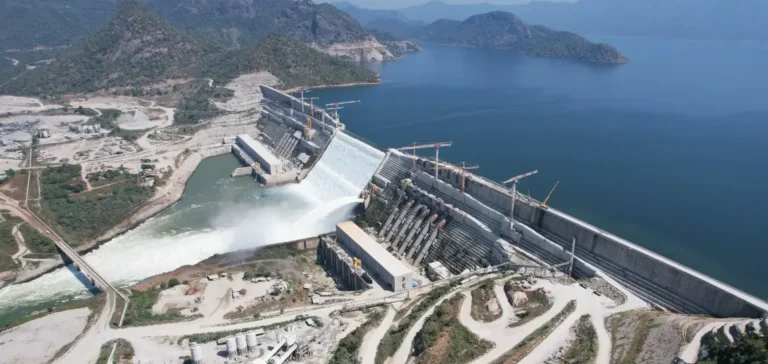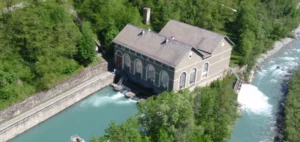Ethiopia expects to earn up to $1 billion (ETB57.24bn) in annual revenues from the Grand Ethiopian Renaissance Dam (GERD), according to Prime Minister Abiy Ahmed. The facility, scheduled to begin operation in September, is set to double the country’s current power generation capacity and support regional exports.
Launched in 2011 at an estimated cost of $4 billion, the project is presented as the largest hydroelectric structure on the African continent. It stretches 1.8 kilometres wide and reaches 145 metres high. Its targeted output capacity is 5,000 megawatts, compared to about 2,500 megawatts currently available across Ethiopia’s grid.
Economic and energy goals
The government strategy relies on a progressive rollout of turbines, with an annual generation target of about 15.8 terawatt hours. The power produced will supply both domestic demand and export contracts to neighbouring countries such as Kenya, Djibouti and Sudan. Ethiopia, home to about 130 million people, nearly half of whom live without access to electricity according to the World Bank, aims to strengthen energy security while earning foreign currency.
Prime Minister Abiy Ahmed confirmed that revenues from GERD operations will be reinvested into new energy projects over the next five to fifteen years. The government is counting on the Eastern Africa Power Pool (EAPP) to develop an integrated regional electricity market.
Hydropolitical tensions with Egypt and Sudan
The project remains contested by downstream countries, notably Egypt and Sudan, which denounce Addis Ababa’s unilateral approach. Cairo, which depends on the Nile for 97% of its water needs, argues that the dam poses a threat to its water security and demands a legally binding agreement on reservoir filling and operations.
Ethiopia has carried out five successive filling phases since 2020 without formal consultation. The Prime Minister stated that despite criticism, no neighbouring country had suffered measurable water loss, adding that the objective was not to harm but to develop domestic infrastructure.
Regional outlook and domestic financing
Largely funded through domestic mechanisms, GERD is presented by authorities as a national interest project. In July, the Prime Minister officially announced the completion of construction and confirmed an inauguration in September 2025. Invitations have been extended to regional countries, while parallel diplomatic campaigns have been reported on the Egyptian side.
According to available projections, Ethiopia’s electricity export revenues for the 2024/2025 fiscal year could already exceed $100 million before the dam reaches full operating capacity. Full ramp-up will nonetheless depend on the number of turbines in service, reservoir levels and annual hydrological conditions.






















